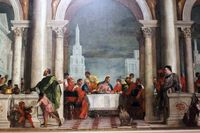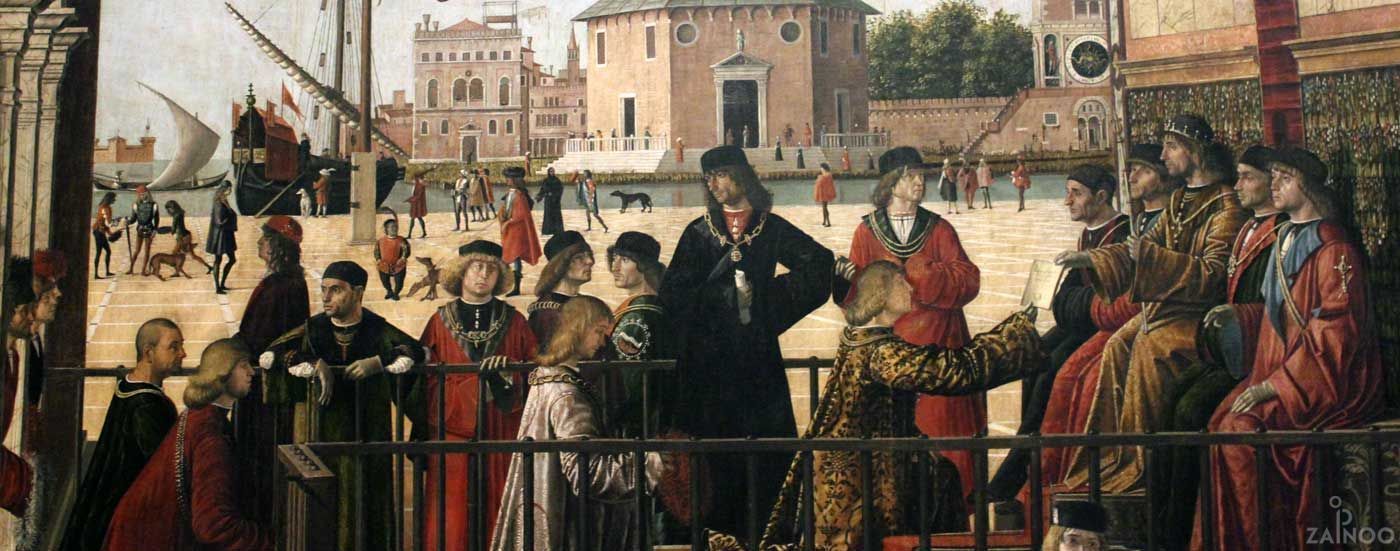Gallerie dell'Accademia
Gallery
Gallerie dell’Accademia
The most important collection of Venetian painting
The Gallerie dell’Accademia has the world’s most important collection of Venetian paintings. The range of paintings extends from the Gothic to the Rococo and contains works by all well known Venetian artists. The premises of the Accademia spread over three buildings: the Convent of the Lateran Canons – built by Andrea Palladio – the church of Santa Maria della Carita and the Scuola Santa Maria della Carita. During the period of secularisation the three buildings were nationalised. Art lovers then created a collection point for paintings which had no place after the dissolution of monasteries, churches and abandoned palaces. Within the space of just a few years, the gallery thus received a unique and incredibly valuable collection of Venetian paintings. This fascinating collection can be admired in the 24 rooms of the Gallerie dell’Accademia today.
The most important rooms and paintings
Right at the start of the tour – in hall 1 – you will find a multi-part Gothic altarpiece by Paolo Veneziano, the first important painter of Venice. You can see the Byzantine influences in the early Venetian paintings in his work. Halls 2-9 contain works of the early Renaissance, including paintings by Giovanni Bellini, Giorgione, Paris Bordone, Titian, Lorenzo Lotto and Palma the Elder.
A first highlight can be admired in hall 10. The different positions of the painters during the Counterreformation are shown here: The liberal view of the last supper “Feast at the house of Levi” by Paolo Veronese in contrast to the dramatic and unrealistic works of Tintoretto “St. Mark freed a slave” and “St. Mark rescued a believing Saracen from distress”. Also on display in hall 10 is the painting of Pietà – the last and unfinished work by Titian. The rest of the hall is now crowded with paintings by famous Venetian artists: works by Veronese, Tintoretto, Tiepolo, Bassano, Canaletto and Pietro Longhi can be admired on the walls.
Painting cycles by Bellini and Carpaccio
Two more highlights follow in halls 20 and 21. The painting cycle “Miracle of the Holy Cross relic”, which was created by several well-known Venetian painters, is truly unique. Particularly noteworthy is the natural reproduction of Venice at the time. Thus in Gentile Bellini’s Procession in St. Mark’s Square you can even recognise the old medieval mosaics in the portals of St. Mark’s Basilica, and Vittore Carpaccio’s Miracle of Healing captures the Rialto Bridge and the appearance of the former commercial district. Another piece by Vittore Carpaccio is the “Cycle of the life of St. Ursula” in hall 21, which is a masterpiece that he created for the Scuola di Sant’Orsola at the end of the 15th century. In the last two halls, in the former church, you can find some works of the early Renaissance – including paintings by Titian and Giovanni Bellini.
For centuries the Rialto Bridge was the only way to cross the Grand Canal on foot. In 1854 the Austrians decided to build a second bridge over the canal: the Ponte dell’Accademia, which is still one out of three bridges leading over the canal.
Entrance
€ 6,50
Opening hours
Accessibility
Landing stage: Accademia








Tweet